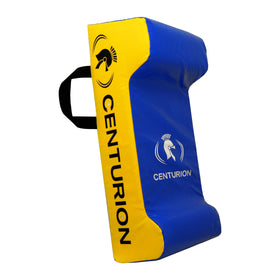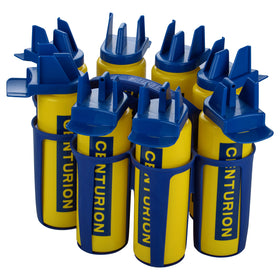Rugby Blog
History of Northampton Saints
by Leana Kell
Northampton Saints are one of the oldest rugby clubs in the country and currently play in the Aviva Premiership. Formed in 1880, the team still play in the original black, green and gold colours at their current home of Franklin's Gardens, which has a capacity of 15,500.
The club's biggest rivals are the Leicester Tigers, and the 'East Midlands Derby' is one of the most competitive games in Rugby Union.
Since the club formed, the Saints have won the English Premiership, the RFU Championship three times, the Anglo-Welsh Cup, the EDF Energy Trophy, the European Rugby Champions Cup, and are twice winners of the European Rugby Challenge Cup.
Take a look below at the history of one of the most unique clubs in rugby history.
The early years
The club's roots began from a boy's improvement class run out of St James Church by Reverend Samuel Wathan Wigg, who allowed boys within the area that were "high-spirited" to let off steam in a constructive way.
After playing a number of games at a host of venues, the Saints found a home at Franklin's Gardens in the late 1880s, a popular pleasure garden within the centre of Northampton. The stadium quickly became one of the finest in England, eventually sporting a brand new main stand in 1927.
By 1905, the club was running well, and had played against the touring All Blacks amongst a number of other highlights. The club had its first England player, local farmer Harry Weston, and it soon adopted Edgar Mobbs, a national captain. A match between the East Midlands and the Barbarians still exists in Mobbs' name known as the 'Mobbs Memorial Match', to commemorate Mobbs' bravery in World War I.
The trail left by Mobbs continued with the induction of forwards such as Ray Longland, Billy Weston and Freddie Blakiston, who was later knighted.
The 1950s, 60s and 70s
By the 1950s, the Saints were top of English rugby thanks to the efforts of Club President Gordon 'Doc' Sturtridge and his secretary, Jerry Gordon. Sturtridge was an Australian who came to England following a tour to South Africa with the Wallabies in 1929. He initially joined Rosslyn Park, but moved to Northampton in 1934. Sturtridge played 118 times for the Saints before finally hanging up his rugby shirt. At the time of Sturtridge's presidency, Don White was captain of the club for seven seasons and made 448 appearances, the second highest in the club's history.
Throughout the 1950s, the Saints were home to some of the finest backs in England and the world such as centre Jeff Butterfield, centre Lewis Cannell, a medical student, and Dickie Jeeps, a scrum-half whose first British and Irish Lions cap preceded his England debut. Jeeps toured three times with the Lions, playing 13 tests in all, and became RFU president in 1976/77.
In the 1960s, forwards such as David Powell and Bob Taylor were made famous playing for England and the Lions. The Northampton Saints were now a firmly established, formidable side.
The 1980s
Despite their best efforts, the Saints had a rough decade, going from one poor season to another and finally finishing at the bottom of Division Two in 1987/88. Narrowly missing relegation thanks to the first season of League Rugby, it was time for some major administrative changes to be made. A group of former players and supporters known as 'The Gang of Seven' put together a proposal for the future running of the organisation, which was voted in by 228 out of 304 men, in a bid to make the Saints "great again".
Barrie Corless was quickly employed as full-time director of rugby - the first man to hold this type of position in England. A shake up of players followed with fly half John Steele and full back Ian Hunter helping to form the new dream team. Such was the changes that by 1991, the Saints reached their first ever Twickenham final, before narrowly losing to the Harlequins in extra time. In 1992, the Saints just missed out on winning the Division One title. The Saints were back, and were a force to be reckoned with.
1990s and the professional era
Despite the promising 1990s, which included the arrival of Ian McGeechan, Scotland's Grand Slam winning coach who took over the club as Director of Rugby, by 1995 the Saints found themselves in Division Two. However, the club was determined not to let relegation defeat them, and used the opportunity to enlist new star players such as centre Gregor Townsend and Jonny Bell, who helped the Saints achieve victory again winning 18 out of 18 games, and serving as a platform for many key players to show off their international capabilities.
Following the announcement on the eve of the 1995 Rugby World Cup, that the sport was to go fully professional, the club set about seeking financial backing which came from Keith Barwell, a local entrepreneur from the newspaper industry who was made Chairman and used his fortune to bankroll the club and ensure it wasn't left behind. More top players joined the Saints to create a formidable unit that was feared throughout the country.
In 1999, McGeechan returned to Scotland and was replaced by John Steele who led the team through their first Heineken Cup, and to the final, played in front of a then-record crowd at Twickenham. Beating Munster to the trophy, the win became one of the greatest days in the club's history.
2001 onwards
Following the Heineken Cup triumph, many key players moved on to include Bateman, Lam, Ridber and Pagel, but despite the loss, former All Blacks coach Wayne Smith led the Saints to victory again, with successful cup final appearances in 2002 and 2003 and reaching the Premiership play-off semi-finals in 2003 and 2004.
In 2003, the Saints triumphed again in Australia when England won the World Cup, and Saints team members Grayson, Dawson, Steve Thompson and Ben Cohen all came home with medals and an open-top bus tour of Northampton. In stark contrast, by 2005, the Saints narrowly missed relegation prompting the swift arrival of star player All Black Carlos Spencer in 2005/06. But, it wasn't until the 2006/07 season that luck for the Saints changed for two very different reasons. On one hand, they won the biggest quarter final in Heineken Cup history away at Biarritz followed by a semi-final in Coventry, but they were also relegated to National League One.
The Saints' relegation prompted a catalyst for change in the form of Jim Mallinder who became director or rugby, bringing with him Dorian West as forwards coach. Similarly to the last time the Saints were relegated, the team went on to play the entire season undefeated during a 35-game campaign, and claimed the EDF Energy National Trophy at Twickenham in front of nearly 20,000 fans.
In the 2008/09 season, the Saints were back in the Premiership and got off to a flying start with just one defeat and one draw in 11 games. The club missed out on reaching the EDF Energy Cup final, defeated by Cardiff Blues who eventually claimed the title, but instead they went on to win all nine games in the European Challenge Cup to lift a major piece of silverware and guarantee a place back in Europe's elite.
The years that followed under Mallinder have seen a consistent strengthening of the squad, to include the LV=Cup win in March 2010, and also reaching the final of the Heineken Cup against Leinster at the Millennium Stadium. In 2013, the Saints stunned the rugby world by winning away at Saracens to reach their first ever Aviva Premiership Rugby Final played against Leicester in front of 82,600 at Twickenham.
In the 2013/14 season, the arrival of British and Irish Lions George North and Alex Corbisiero added to the excitement of the year ahead for the Saints, and there were many highlights to follow to include the Aviva Premiership semi-final against Leicester at Franklin's Gardens. The end of the season saw the Saints lift not only the European Challenge Cup but also the Aviva Premiership trophy, coming home to an open top bus parade in Northampton's packed town centre.
The Saints have finished the 2015/16 season in fifth place with 60 points after yet another exciting year of highs and a few lows. We wish them every success for the 2016/17 season.




